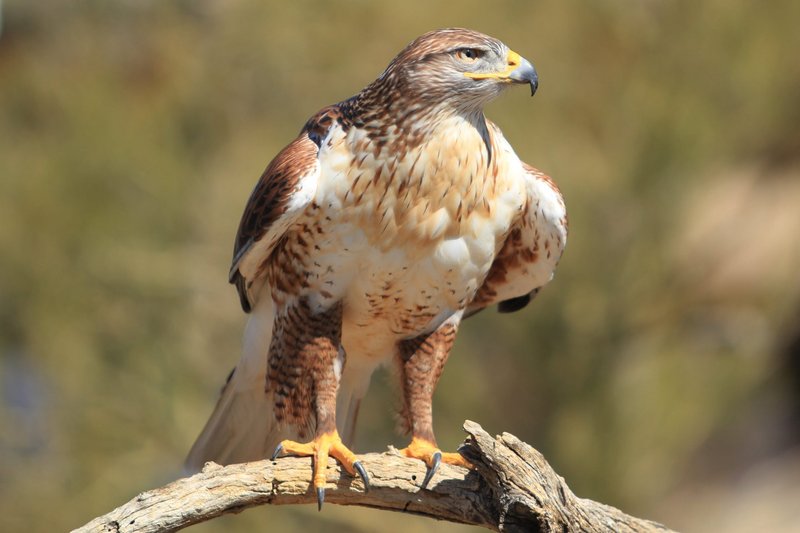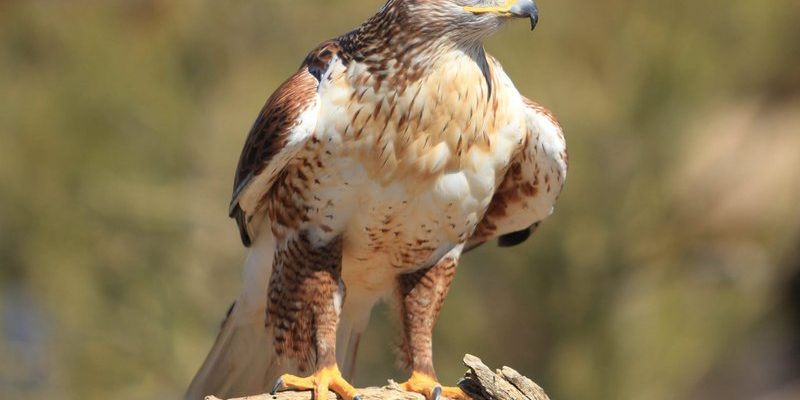
Imagine sitting down to a meal. Your menu might include pasta, salad, or a nice steak. Now picture a Ferruginous Hawk, perched high in a tree or on a telephone pole, scanning the ground below like a detective piecing together clues. It’s looking for its next meal, and the options are quite different from what you’d find in a restaurant. The Ferruginous Hawk feasts primarily on small mammals, but its diet isn’t limited to just one or two types. Let’s explore what makes up its diet and how it hunts like the true predator it is.
The Diet of the Ferruginous Hawk
When we talk about the Ferruginous Hawk’s diet, we’re looking at a range of foods that vary based on habitat and availability. This hawk is a carnivore, meaning it primarily feeds on meat. Small mammals are at the heart of its diet. You’re likely to see it hunting rodents like prairie dogs, voles, and even jackrabbits. These creatures provide a hearty meal, making them a popular choice.
Interestingly, the Ferruginous Hawk also enjoys a variety of birds and reptiles when the opportunity arises. Some reports even show that they’ll eat insects during lean times, though this is less common. With the ability to adapt its diet based on local availability, this hawk proves to be a versatile hunter.
In addition to small mammals, the Ferruginous Hawk isn’t shy about scavenging. If it comes across a carcass, it will often take advantage of an easy meal. Imagine finding a half-eaten slice of pizza; you’d probably grab it instead of cooking something from scratch, right? That’s the hawk’s approach too.
How the Ferruginous Hawk Hunts
Now, let’s talk about the hunting methods of the Ferruginous Hawk. This hawk employs a variety of strategies, depending on its surroundings. One of the most common techniques is called perch-and-pounce. Picture it like waiting for the perfect moment to dive into a pool—patience is key! The hawk often perches on a high vantage point, scanning the ground below for movement. Once it spots a potential meal, it launches into action.
The hawk is built for this kind of hunting. With powerful talons and keen eyesight, it can detect the slightest movement from great distances. You might be wondering just how far it can see. Well, its vision is estimated to be up to eight times greater than ours! Imagine being able to read a book from a mile away—that’s the hawk’s advantage when hunting.
In open fields, Ferruginous Hawks sometimes use a method called flushing. This involves startling their prey into running or flying in an attempt to escape, which then allows the hawk to swoop in. It’s like a game of hide-and-seek, except the hawk is the one who seeks and the prey is doing their best to hide.
The Role of Climate and Habitat
The Ferruginous Hawk’s hunting and foraging abilities are closely tied to its habitat and climate. These birds are typically found in open grasslands, plateaus, and shrublands. The open fields provide the perfect environment for spotting prey from a distance. Think of these places as their personal dining room, where the layout is designed for easy viewing.
However, their diet can change based on the seasons. During the fall and winter months, when small mammals become less available, the hawks may focus more on birds or switch to scavenging. This adaptability is crucial for survival. It’s like switching from a three-course meal to a simple snack when you’re trying to save on groceries!
Climate can also affect their hunting success. In areas where the snow covers the ground, Ferruginous Hawks have to work a little harder to find food, which might lead them to travel greater distances in search of prey.
Territory and Hunting Ground
Territory plays a vital role in the Ferruginous Hawk’s hunting efficiency. These hawks are known for their wide-ranging territories, which can span up to two square miles. This expanse allows them to hunt efficiently without depleting local resources. By keeping their hunting grounds spacious, they ensure that there’s always a steady supply of prey.
Interestingly, these hawks often return to the same hunting spots once they find a successful area. You could compare it to your favorite restaurant—once you find a place you love, you keep going back for more!
They also benefit from communal hunting. When several Ferruginous Hawks are in the same area, they might work together to flush out prey or keep watch for each other. It’s a classic case of teamwork, showing that even in the wild, cooperation can improve hunting success.
Hunting Techniques: From Ground to Sky
Ferruginous Hawks are known for their diverse hunting techniques, which can vary from ground attacks to aerial pursuits. For instance, when hunting on the ground, they’re incredibly stealthy. They might crouch down, blending in with their surroundings, before launching a fast, powerful strike. It’s all about that surprise element!
When they decide to hunt in the air, their large wings allow for impressive gliding. They can soar high and scan vast areas, looking for any signs of movement. Imagine a stealthy player in a video game, using the high ground to spot enemies below. That’s the hawk, navigating the skies with precision.
Another fascinating technique is called hovering. In this method, the hawk will maintain its position in the air, using its wings to stay stationary while searching for prey below. It’s a unique sight, and it requires a combination of strength and skill. You might think of it like a drone delivering supplies—perfectly poised and ready to spot something interesting.
The Importance of Foraging Habits
Understanding the foraging habits of the Ferruginous Hawk is crucial not just for appreciating its role in the ecosystem, but also for conservation efforts. By keeping rodent populations in check, these hawks play a significant role in maintaining balance in their environments. Without such natural predators, rodent populations could explode, leading to a host of ecological problems.
Additionally, their adaptability to changing food sources helps them thrive even as their habitats change. In areas where agriculture is prevalent, for example, Ferruginous Hawks may shift to hunting pests that threaten crops. This flexibility not only benefits the hawks but also farmers who rely on these birds to keep crop damage in check.
By studying their hunting patterns and dietary preferences, wildlife experts can better manage habitats and protect these incredible birds. Conservation is essential, especially as their habitats face pressures from human activities.
Closing Thoughts
The Ferruginous Hawk is more than just a beautiful bird; it’s a remarkable predator with fascinating hunting strategies and dietary habits. From its keen eyesight to its diverse methods of catching prey, understanding what this hawk eats and how it hunts reveals the intricacies of nature. Next time you spot one soaring across the sky, remember the hard work that goes into its survival. It’s not just hunting; it’s an art form shaped by millions of years of evolution. So, the next time you see a hawk perched high above, take a moment to appreciate the complexity of its life—it’s a real wonder of the wild!

